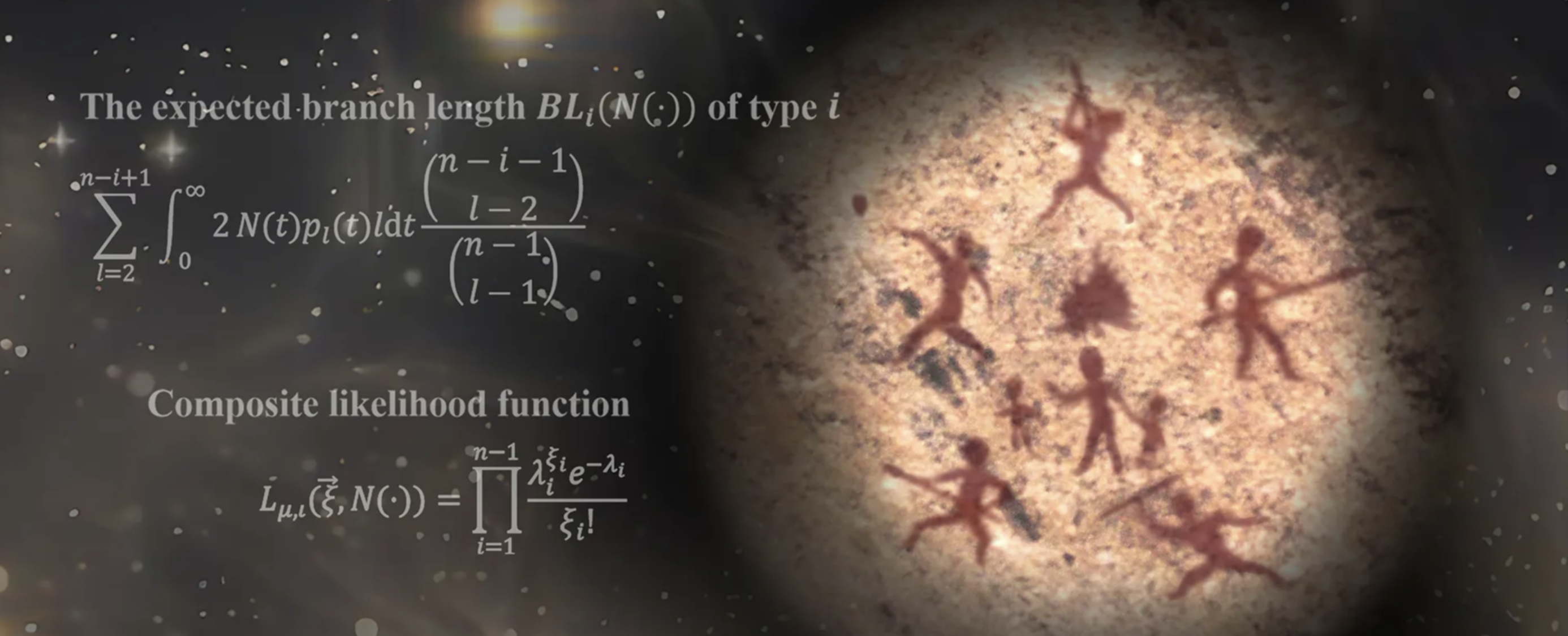The Near-Extinction of Human Species, a Million Years Ago

Today, there are over 8 billion human beings inhabiting the planet. We have become the dominant force shaping Earth’s landscapes, and our actions are causing numerous species to face the threat of extinction. Little known is that our ancestors were once on the brink of extinction, which could have been no less dramatic than the Cretaceous extinction event.
While the past million years have been a pivotal epoch in human evolution, our understanding of the population history has been hitherto constrained to the most recent 300,000 to 100,000 years. The veil of mystery has been due in part to the limitations of ancient DNA sequencing technologies and the Earth’s climate which is unfavorable for the preservation of DNA in fossils older than 300,000 years.
To overcome these hurdles, scientists have turned to modern human genomes, applying innovative population genetics theories to decode the historical imprints left by our ancestors in our genomes.
The effective population size of prehistoric times, though not recorded in written form, affects the coancestry rate, a measure of genetic relatedness or shared ancestry between two individuals or populations, in each generation. By examining these genetic imprints, researchers can infer the population sizes of yesteryears. However, the challenge lies in the fact that the more distant the population history, the weaker the imprint signals preserved to the present day.
To combat this, researchers from the Shanghai Institute of Nutrition and Health have pioneered a new theoretical approach, FitCoal, in the realm of population genetics and computational biology. This technique uses math to make deductions and find answers about how long branches of the family tree should be. This theory also takes into account the different types of changes in their genes over time, and helps scientists calculate the chances of seeing a particular pattern of genetic changes based on different scenarios of how the population has grown and evolved. It gives us a way to estimate the likelihood of observing a specific pattern of gene mutations in a group of individuals, which tells us about their shared history.

Essentially, FitCoal can take a “census” of ancient human populations without needing a priori knowledge. This remarkable analytical technique allowed the researchers to peer back into the annals of time and paint a vivid portrait of the ancient human population dynamics by dissecting the genetic signatures of 3,154 present-day human genomic sequences.

Capitalizing on FitCoal, researchers delved into the genome data from the 1000 Genomes Project and HGDP-CEPH Genome Project across 50 modern human populations. They made a startling discovery: approximately 930,000 years ago, during the tumultuous climate changes of the Early-Middle Pleistocene transition, human ancestors saw a drastic decline in their population. This near extinction event led to a loss of about 98.7% of the population, with the subsequent 117,000 years seeing an average number of adult individuals hovering around 1,280.
The findings, published recently in Science, like shards of a lost civilization, have unveiled the existence of an extraordinary event within African populations—an awe-inspiring super bottleneck.
While the super bottleneck was directly inferred in African populations, its tantalizing traces were discovered indirectly in non-African populations. Astonishingly, the researchers determined that confounding factors such as population structure and selection had minimal impact on the identification of this ancient phenomenon during the Mid-Pleistocene. It stands as a testament to the resilience of the FitCoal process, which triumphed over other methods, by providing sharper accuracy and effortlessly excluding the effects of positive selection and sequencing errors.
The implications of this study extend far beyond the realm of science, transcending into the essence of our shared human story. For too long, the focus has been fixated on the more recent chapters of our evolutionary epic—the out-of-Africa migration and the subsequent population expansions. However, the ancient demographic history of the Mid-Pleistocene era has remained an enigma, waiting to be deciphered.




